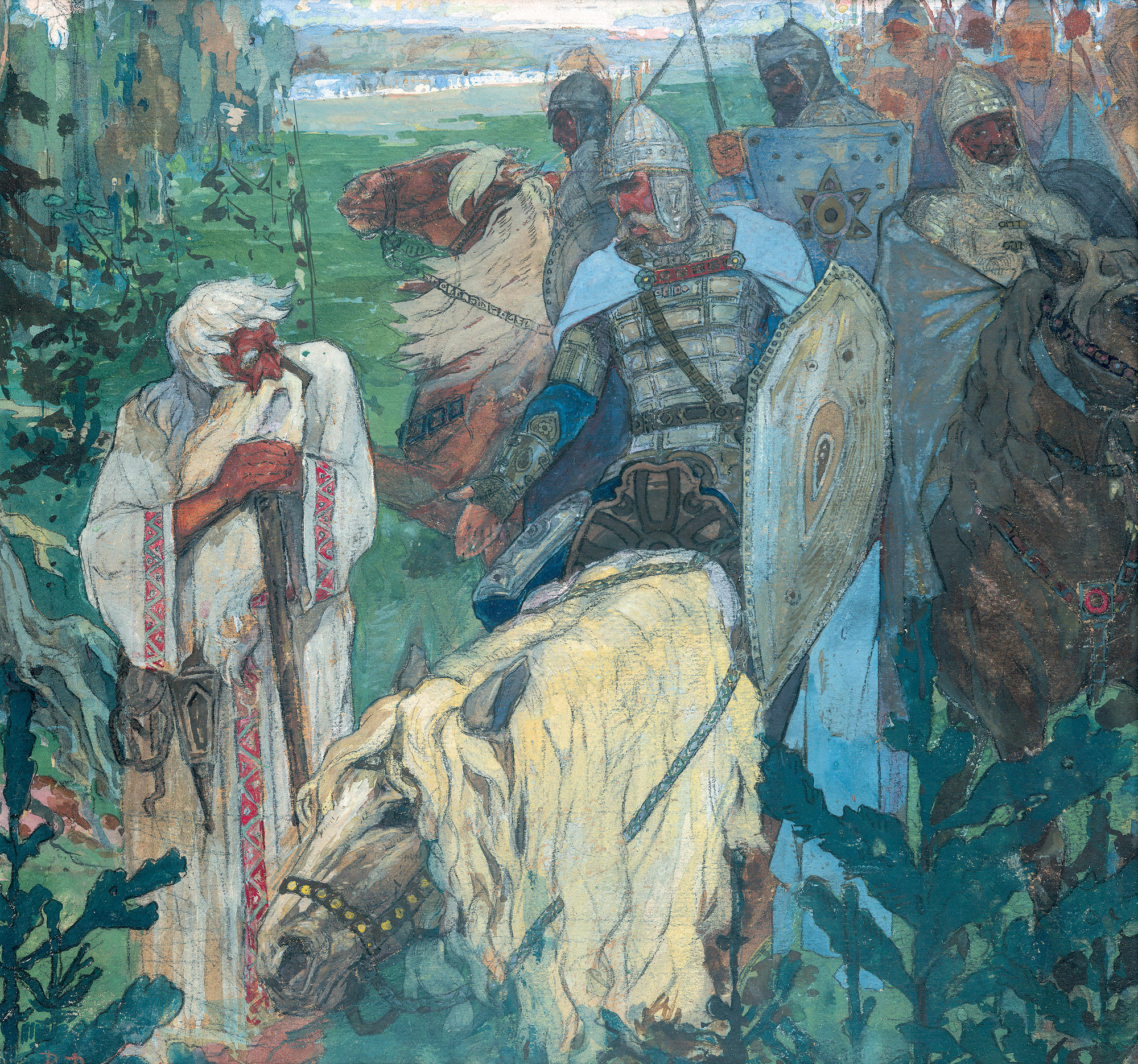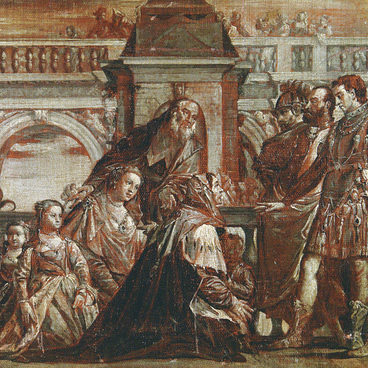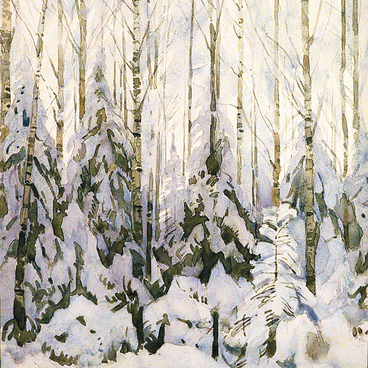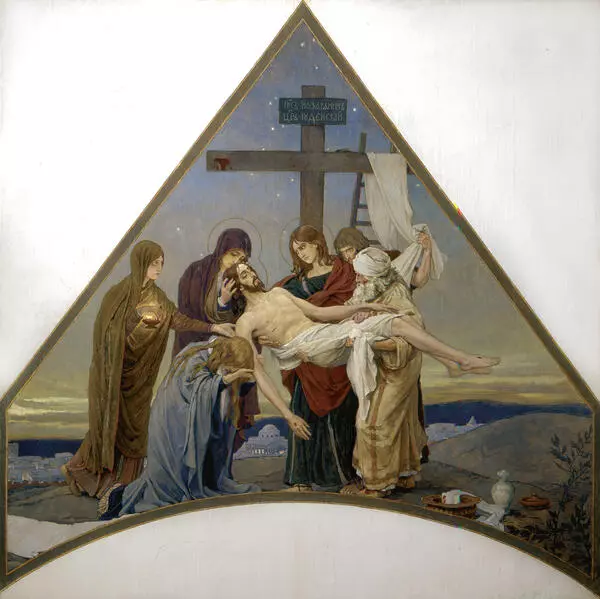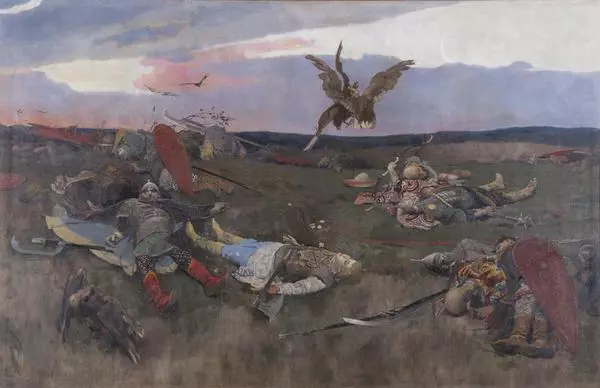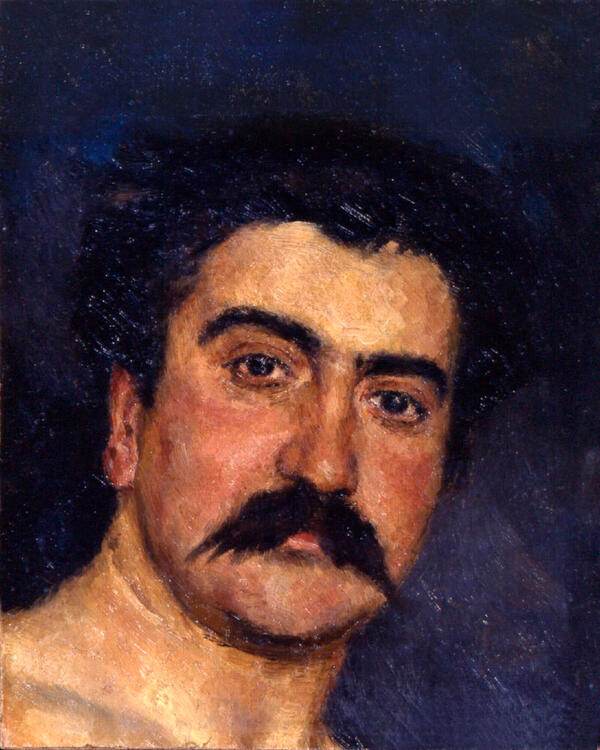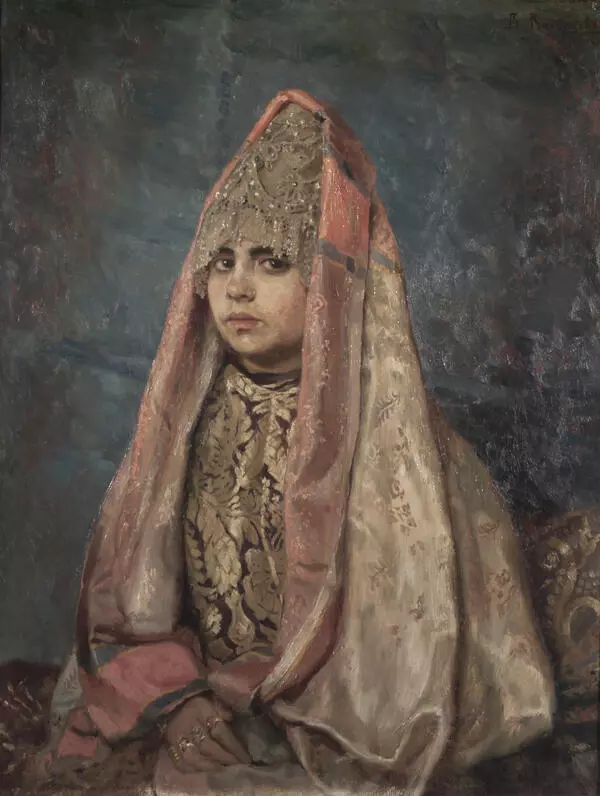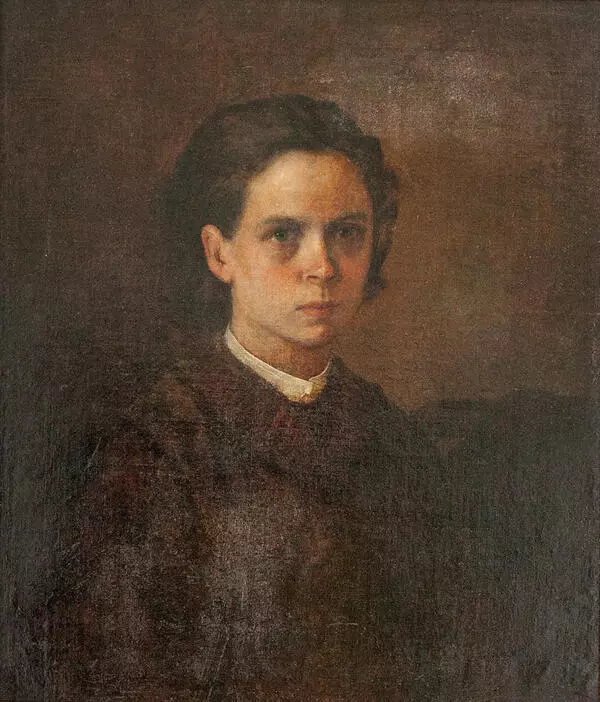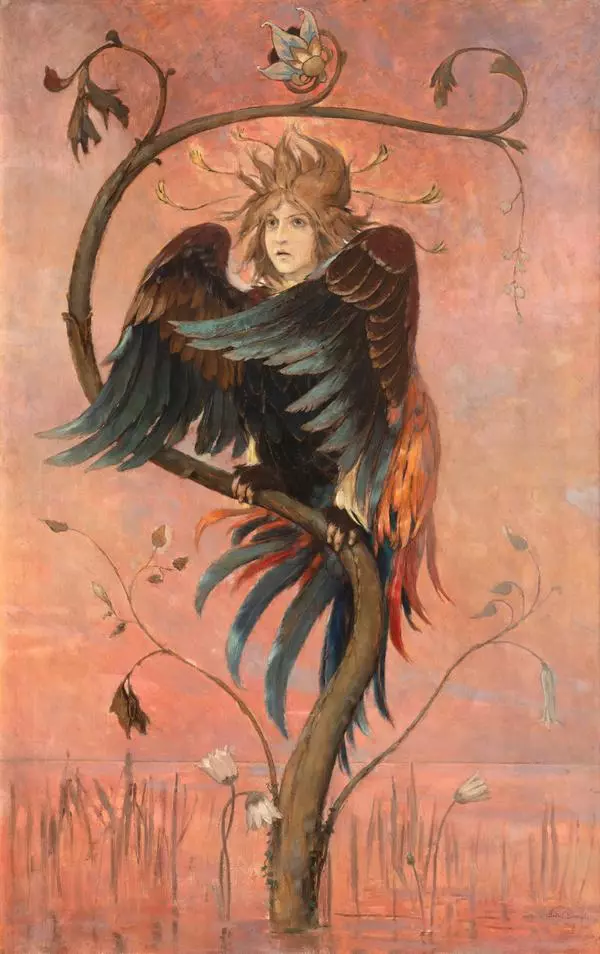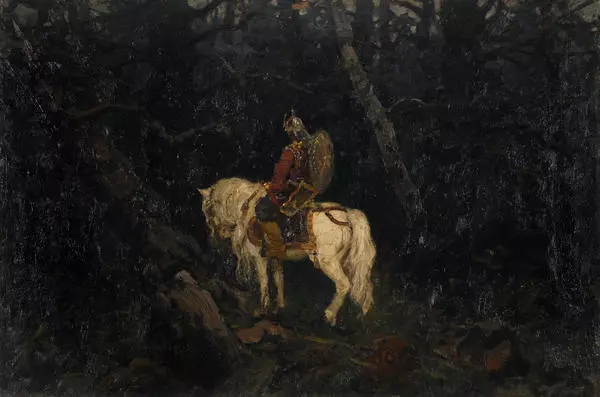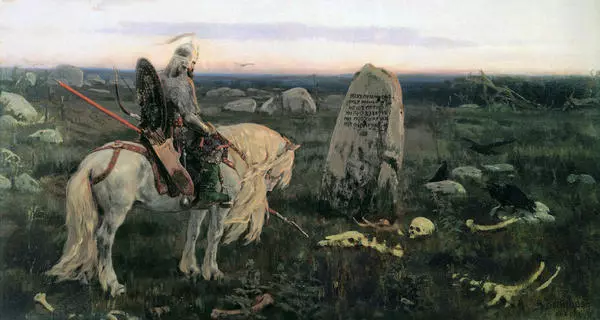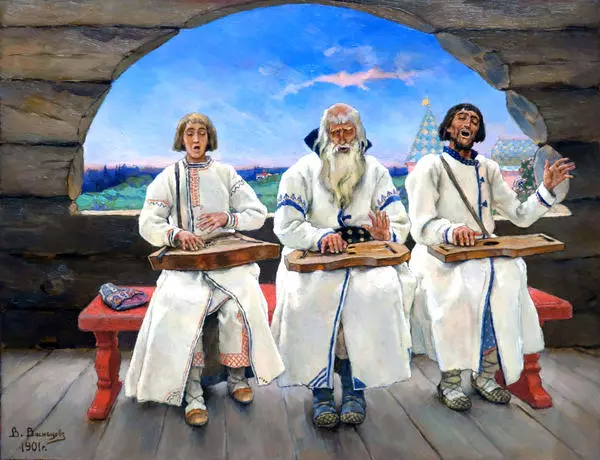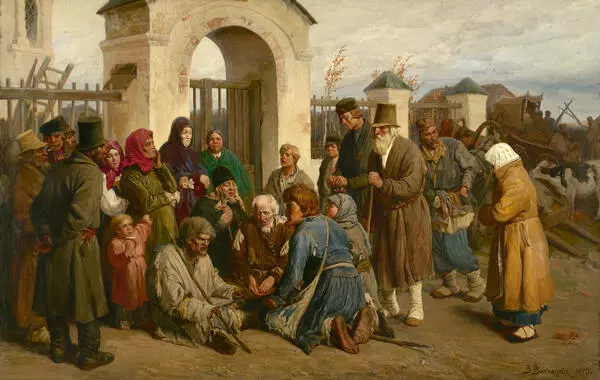In addition to being an artist whose works significantly contributed to the development of the national art from the time of the Itinerant painters to that of the Art Nuevo, Victor Vasnetsov was an architect.
Vasnetsov is the author of monumental painting decorating the St. Vladimir Cathedral in Kiev and an orthodox cathedral in Warsaw. The Church of the Divine Savior in Abramtsevo, the artist’s own house in the 3rd Troitsky Lane (presently, Vasnetsov Lane) in Moscow, and the face of the Tretyakov Gallery were all built by his design. He created painting and graphic artworks in various techniques using pencil, sepia, and pen, gouache, and water colors. A new form of expression was created on Vasnetsov’s canvasses for folk ballads, legends, songs, and fairy tales passed on from generation to generation by the word of mouth. The graphic piece Oleg’s Meeting with a Magician was created in 1899 as a preliminary sketch for his future illustration drawing to Alexandr Pushkin’s The Song of Oleg the Wise.
In commemoration of A.S. Pushkin’s birth centenary in 1899, the Academy of Science Jubilee Commission arranged a publication of the poet’s works in three volumes. A number of prominent artists of the time were invited to decorate the books, namely, Alexander Benois, Mikhail Vrubel, Isaac Levitan, Vasily Surikov, Ilya Repin, and also Victor Vasnetsov. The set of books was published in Anatoly Mamontov’s printing shop; the drawings were reproduced by method of zinc etching in Moscow and Paris. Vasnetsov’s drawings were put in the first of the three volumes to illustrate The Tale of Tsar Saltan (Three fair maidens, late one night/Sat and spun by candlelight), and in the third one to illustrate the play Boris Godunov (Pimen) and The Mermaid (the Underwater Palace).
The artist also created a number of illustrations to The Song of Oleg the Wise: Oleg’s Meeting with a Magician, Funeral Feast for Oleg, Oleg and the Magician, and Oleg the Wise. For a long time, the original copies of those illustrations were considered missing, and it is only in the mid-20th century that they were found in possession of a private person, bought by the Public Literary Museum of Moscow where they are kept to this day.
In 1948, the Kaluga Museum received a graphic artwork in water color and gauche in the bottom left-hand corner of which an inscription was found: V. Vasnetsov (in the old spelling). The picture happened to be yet another version of the Oleg’s Meeting with a Magician. Having created two compositions to illustrate the same story, the artist gave preference to the more ‘picturesque’ one which he used for the jubilee book.
Vasnetsov is the author of monumental painting decorating the St. Vladimir Cathedral in Kiev and an orthodox cathedral in Warsaw. The Church of the Divine Savior in Abramtsevo, the artist’s own house in the 3rd Troitsky Lane (presently, Vasnetsov Lane) in Moscow, and the face of the Tretyakov Gallery were all built by his design. He created painting and graphic artworks in various techniques using pencil, sepia, and pen, gouache, and water colors. A new form of expression was created on Vasnetsov’s canvasses for folk ballads, legends, songs, and fairy tales passed on from generation to generation by the word of mouth. The graphic piece Oleg’s Meeting with a Magician was created in 1899 as a preliminary sketch for his future illustration drawing to Alexandr Pushkin’s The Song of Oleg the Wise.
In commemoration of A.S. Pushkin’s birth centenary in 1899, the Academy of Science Jubilee Commission arranged a publication of the poet’s works in three volumes. A number of prominent artists of the time were invited to decorate the books, namely, Alexander Benois, Mikhail Vrubel, Isaac Levitan, Vasily Surikov, Ilya Repin, and also Victor Vasnetsov. The set of books was published in Anatoly Mamontov’s printing shop; the drawings were reproduced by method of zinc etching in Moscow and Paris. Vasnetsov’s drawings were put in the first of the three volumes to illustrate The Tale of Tsar Saltan (Three fair maidens, late one night/Sat and spun by candlelight), and in the third one to illustrate the play Boris Godunov (Pimen) and The Mermaid (the Underwater Palace).
The artist also created a number of illustrations to The Song of Oleg the Wise: Oleg’s Meeting with a Magician, Funeral Feast for Oleg, Oleg and the Magician, and Oleg the Wise. For a long time, the original copies of those illustrations were considered missing, and it is only in the mid-20th century that they were found in possession of a private person, bought by the Public Literary Museum of Moscow where they are kept to this day.
In 1948, the Kaluga Museum received a graphic artwork in water color and gauche in the bottom left-hand corner of which an inscription was found: V. Vasnetsov (in the old spelling). The picture happened to be yet another version of the Oleg’s Meeting with a Magician. Having created two compositions to illustrate the same story, the artist gave preference to the more ‘picturesque’ one which he used for the jubilee book.
